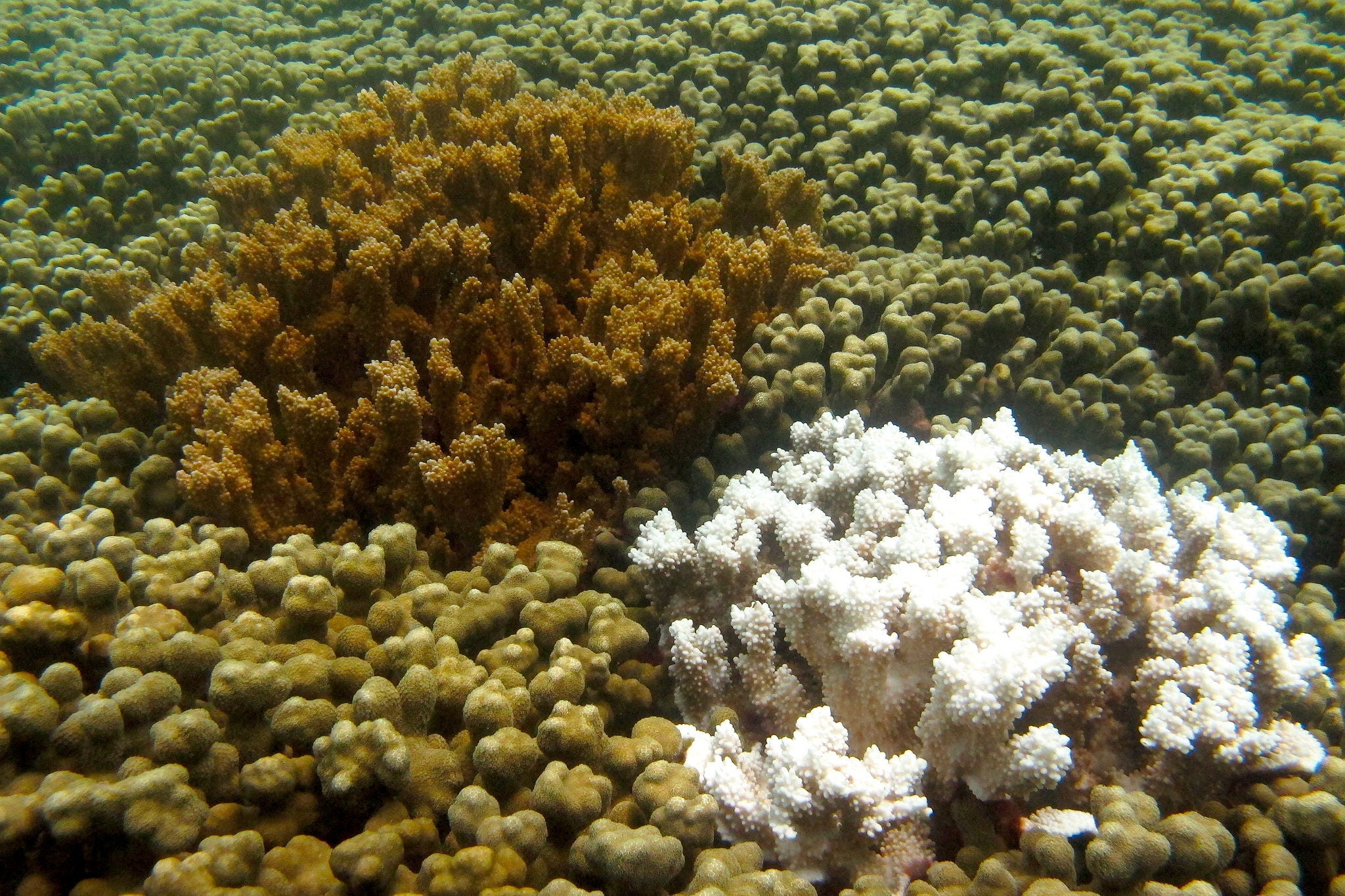Smithsonian Coral Study Highlights Devastating Effects of Bleaching on Assisted Reproduction
Findings Will Result in Redirected Conservation Efforts for World's Imperiled Coral Species
Not even pioneering assisted-reproduction techniques can bolster the odds of successful reproduction in bleached coral reefs, according to a new study from the Smithsonian Conservation Biology Institute (SCBI) and the University of Hawaii. The findings, which were published June 17, in Reproduction, Fertility and Development indicate that SCBI scientists and partners collecting and freezing coral cells will be much more limited in where they collect samples as bleaching events become more frequent worldwide.
From previous studies, we knew that bleaching affected natural reproduction, but we didn't think the physiological changes would be quite as profound as we observed with cryopreservation, which is the freezing of coral cells, said Mary Hagedorn, a Smithsonian physiologist and lead author on the study. Cryopreservation stresses the cells, and with the added thermal stress and bleaching, our conservation process collapsed. Although it is difficult to determine what is natural variation and what is not, our perception was that since conducting these reproductive studies for the past 12 years in Hawaii and around the world, we have never had such difficulty with cryopreserving coral sperm cells and producing offspring from them.
The researchers looked at the reproductive success of two species of Hawaiian coral, Fungia scutaria and Montipora capitata, both of which experienced severe bleaching in 2014 and 2015. In previous years, these species had been cryopreserved as part of a frozen bank. Years from now, conservationists could thaw these cells with the hopes of restoring a dwindling species or population.
The cryopreserved coral that came from these bleaching events failed increasingly at every step of the reproductive process, demonstrating that bleaching may affect many critical reproductive characteristics. Sperm movement was reduced, and eggs were misshapen. In addition, the resulting offspring faced developmental delays, did not make it past the larval stage or failed to settle. Additional long-term studies can determine which reproductive changes are the direct result of thermal stress and bleaching versus natural variation.
Because our window of opportunity for coral cryopreservation is limited to a few days each year during spawning periods, we cannot afford to spend our time going to places with bleached coral in the future,” Hagedorn said. “If we can't help bleached coral, we need to build the frozen bank by going after coral during non-bleaching periods. As we observe the ongoing devastation on the Great Barrier Reef due to bleaching and potential loss of genetic diversity, this adds enormous urgency for us to collect this material while genetic diversity on reefs is still high in most oceans.
The next step for researchers is to identify places around the world where they can preserve coral that are rare, have important genes, are robust, or have significant abilities to adapt. SCBI researchers will also next try to replicate this detailed reproductive assessment with coral in the genus Acropora to see if the results are similar. This group is the world's reef-building coral, the most sensitive to many stressors and thus the most frequently studied.
Globally, greenhouse gasses from burning fossil fuels are warming the oceans, making them more acidic and causing corals to stress and bleach. As a result, the corals are more susceptible to emergent diseases. Locally, there are numerous causes of bleaching: pollution and sedimentation from poor land-use practices, nutrient run-off from farms and waste-treatment plants, and destructive practices such as dynamite fishing and trawls. Without action, coral reefs and many of the animals that depend on them may cease to exist within the next 40 years.
Additional authors on this paper are Virginia Carter, Julio F. Camperio Ciani, Alison N. Dygert, Reuben D. Schleiger and Michael Henley, all of SCBI and the Hawai'i Institute of Marine Biology at the University of Hawaii, Kaneohe, and Claire Lager of the Hawai'i Institute of Marine Biology.
